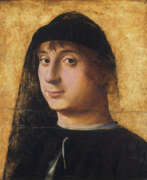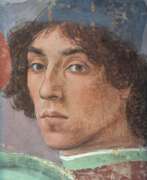Portraitist 15th century


Hans Baldung, also known as Hans Baldung Grien, was a prominent figure in the German Renaissance, celebrated for his innovative approach to painting, printmaking, and drawing. Born around 1484 in Schwäbisch Gmünd, Germany, and passing away in 1545 in Strasbourg, France, Baldung's career was marked by a distinctive style that art historians have associated with the mannerist tendencies of the time. His work is notable for its exploration of themes such as the imminence of death, the complexities of human sexuality, and scenes of witchcraft, distinguishing him from his contemporaries with a bold and unique artistic voice.
Educated in the workshop of Albrecht Dürer, Baldung quickly developed his own artistic language, absorbing and then transcending Dürer's influence. He is particularly renowned for his altarpieces, portraits, and a series of works that delve into eroticism and the supernatural. Among his most significant contributions is the high altar of the Freiburg Münster, an eleven-panel masterpiece depicting scenes from the life of the Virgin Mary, which remains a testament to his mastery over religious subjects even as he ventured into more secular and profane themes.
Baldung's fascination with witchcraft and his portrayal of witches in art were groundbreaking for the time. His works in this area, such as "The Witches' Sabbath" and "Weather Witches," reveal a complex interplay of humanist thought, classical literature, and contemporary beliefs about witchcraft. They offer a nuanced perspective that blends satire with a deeper commentary on human nature and societal fears, marking Baldung as a pioneer in the visual exploration of these themes.
Despite his engagement with the themes of death and witchcraft, Baldung's oeuvre is also rich in portraits characterized by sharp individualization and psychological depth, as well as altarpieces that convey a profound spiritual and theological insight. His ability to navigate between the realms of the divine and the earthly, the solemn and the profane, solidifies his position as a versatile and innovative artist of the Renaissance.
For collectors and experts in art and antiques, Hans Baldung's work offers a unique window into the confluence of Renaissance artistry, humanist thought, and the socio-religious dynamics of early 16th-century Europe. His paintings and prints not only adorn museums and galleries worldwide but also continue to inspire and provoke deep reflection on the human condition.
To stay informed about new discoveries, exhibitions, and auction events related to Hans Baldung's art, signing up for updates can provide enthusiasts and collectors with valuable insights into the enduring legacy of this remarkable artist. This subscription service is designed to alert subscribers to new product sales and auction events specifically related to Hans Baldung, ensuring that they remain at the forefront of developments in the field of Renaissance art and antiques.


Vittore Carpaccio, an illustrious Italian painter, was a master of narrative storytelling and vivid detail, flourishing in Venice between 1465 and 1526. His specialization in religious and historical scenes set him apart, with a particular knack for infusing life and emotion into every brushstroke. Carpaccio's work exemplifies the Venetian School's richness, noted for its deep colors and intricate details that capture the viewer's imagination.
Carpaccio is renowned for his ability to weave intricate narratives through his paintings, often depicting scenes from the lives of saints with both devotion and a keen eye for daily Venetian life. His works are celebrated for their meticulous attention to architectural and costume details, offering a window into the Renaissance period's social and cultural contexts.
Among his known masterpieces, the cycle of paintings dedicated to the legend of Saint Ursula in the Scuola di San Giorgio degli Schiavoni in Venice stands as a testament to his narrative prowess and technical skill. These works, alongside others housed in prestigious galleries worldwide, underscore Carpaccio's significant contribution to the art world, making him a subject of admiration among collectors and art historians alike.
For those fascinated by the splendor of the Renaissance and the beauty of Venetian artistry, Vittore Carpaccio's oeuvre offers a rich tapestry of historical and religious narratives brought to life through his exceptional talent. His legacy continues to inspire and captivate, embodying the essence of one of the most vibrant periods in art history.
To delve deeper into the world of Vittore Carpaccio and stay informed about upcoming sales, exhibitions, and auction events featuring his work, signing up for updates is your gateway to the exclusive circle of Renaissance art enthusiasts. This subscription is a commitment to keeping you at the forefront of new discoveries and opportunities to enrich your collection with pieces by this Venetian master.


Antonello da Messina, a preeminent Italian painter born around 1430 in Messina, Sicily, left an indelible mark on the art world with his pioneering techniques and emotive works. He is primarily recognized for his profound influence on Venetian painting during the Renaissance, although his reach extended far beyond Venice.
Antonello da Messina's early work, thriving with eclectic influences from Flemish, Catalan, and Provençal elements, reflects the diverse artistic culture of southern Italy. His journey took a significant turn with his move to Venice around 1475, where he not only embraced but also enhanced the art of portraiture. He brought a new depth to this genre, showcasing his subjects in three-quarter views against dark backgrounds, a striking departure from the prevalent profile portraits of the time.
In Venice, Antonello da Messina's work began to exhibit a greater focus on the human figure in terms of anatomy and expressivity. This shift is notably seen in his masterpiece, the St. Sebastian, which skillfully blends the human form with a backdrop of Venetian life. His time in Venice was also crucial for his development in religious art, as seen in his works like the Virgin Annunciate and the San Cassiano Altarpiece. These pieces were pivotal in evolving the sacra conversazione format, which later inspired artists like Giovanni Bellini.
Antonello da Messina's legacy is particularly prominent in his approach to religious themes. His depiction of Christ and the Virgin Mary are characterized by a palpable realism, with figures extending into the viewer's space, blurring the lines between the sacred and the secular. This innovative style had a profound impact on the development of European painting, setting the stage for the emotive and realistic portrayal of religious figures.
Antonello da Messina's artistic journey was marked by his ability to blend Italian simplicity with a Flemish focus on detail. His works, particularly his portraits, showcased a psychological depth that was ahead of his time. The legacy of his techniques, particularly in oil painting and the psychological dimension he lent to his works, continued through his family, notably his son Jacobello.
For collectors and experts in art and antiques, the works of Antonello da Messina offer a unique insight into the evolution of Renaissance art, especially in the realms of portraiture and religious painting. His contributions have cemented his place as a master of the Renaissance era.
If you are keen on staying informed about new sales and auction events related to Antonello da Messina, consider signing up for updates. This service is dedicated to providing alerts on new product sales and auction events related to his works, ensuring that enthusiasts and collectors don't miss out on acquiring a piece of Renaissance art history.


Francesco Francia, also known as Francesco Raibolini, was an Italian painter, goldsmith, and medallist from Bologna. He began his career in the late 15th century and collaborated with artists like Lorenzo Costa, drawing inspiration from the styles of Ercole de' Roberti, Perugino, and Raphael.
Francia ran a successful workshop and trained notable artists such as Marcantonio Raimondi and Ludovico Marmitta. While it was once rumored that Raphael's work caused him to die of depression, their friendship has since debunked this claim.
Francesco Francia passed away in Bologna, and his sons, Giacomo Francia and Giulio Francia, also became artists.


Jacopo Palma the Elder, born in 1480, was an illustrious Italian painter whose work left an indelible mark on the Venetian Renaissance. Renowned for his vibrant colors, dramatic compositions, and adept storytelling, Palma the Elder was a master of both religious and secular themes, embodying the splendor of Venice in his canvases.
Known for his profound influence on the development of Venetian painting, Palma's art is celebrated for its dynamic use of light and shadow, a characteristic that would come to define the Venetian style. His ability to infuse scenes with emotional depth and realism drew viewers into his narratives, making his works compelling for both contemporary audiences and modern viewers.
Among his most notable works are his altarpieces, which grace many of Venice's storied churches, showcasing his skill in depicting sacred subjects with reverence and majesty. His portraits and mythological scenes are equally esteemed, housed in some of the world's most prestigious museums and galleries. These pieces not only highlight his technical prowess but also his versatility as an artist.
For collectors and experts in art and antiques, Jacopo Palma the Elder represents a pivotal figure whose contributions to the Renaissance continue to captivate and inspire. His paintings offer a window into the rich cultural and artistic milieu of early 16th-century Venice, making them highly sought after for their beauty and historical significance.
To discover more about Jacopo Palma the Elder and to stay updated on opportunities to view or acquire his works, signing up for updates is a must. This subscription will ensure you're informed about the latest exhibitions, sales, and auctions related to this master's oeuvre, enriching your understanding and appreciation of Venetian art.


Pinturicchio, real name Bernardino di Betto di Biagio, was an Italian Renaissance painter.
Pinturicchio was a representative of the Umbrian Quattrocento school. He studied with Fiorenzo di Lorenzo, and together with Raphael with Perugino, who helped him paint the frescoes in the Sistine Chapel at the Vatican (1481-1482). As a mature master, Pinturicchio rejected some of Perugino's principles - the monotony and gradualness of the figures, the unity of time and place - which brings him rather closer to Botticelli.
His best known murals are in the churches of Santa Maria del Popolo, Santa Maria in Araceli and the Borgia Apartments in Rome, and in Siena Cathedral (Piccolomini Library). The frescoes of this artist's works often feature 'grotesques'. Of the easel paintings, 'Portrait of a Boy' from the Old Masters Gallery in Dresden is noteworthy.


Giovanni Girolamo Savoldo was an Italian High Renaissance painter active mostly in Venice, although he also worked in other cities in northern Italy. He is noted for his subtle use of color and chiaroscuro, and for the sober realism of his works, which are mostly religious subjects, with a few portraits. His portraits are given interest by their accessories or settings; "some even look like extracts from larger narratives".
About 40 paintings by Savoldo are known in all, six of them portraits; only a handful of drawings by him are known. He was highly regarded in his own lifetime; several repetitions of works were commissioned from him, and copies of his work made by others. He slipped from general awareness, however, and many of his works were assigned to more famous artists, especially Giorgione, by the art trade. Awareness of his oeuvre revived in the 19th century, though the dating of many paintings remains controversial among specialists.

























